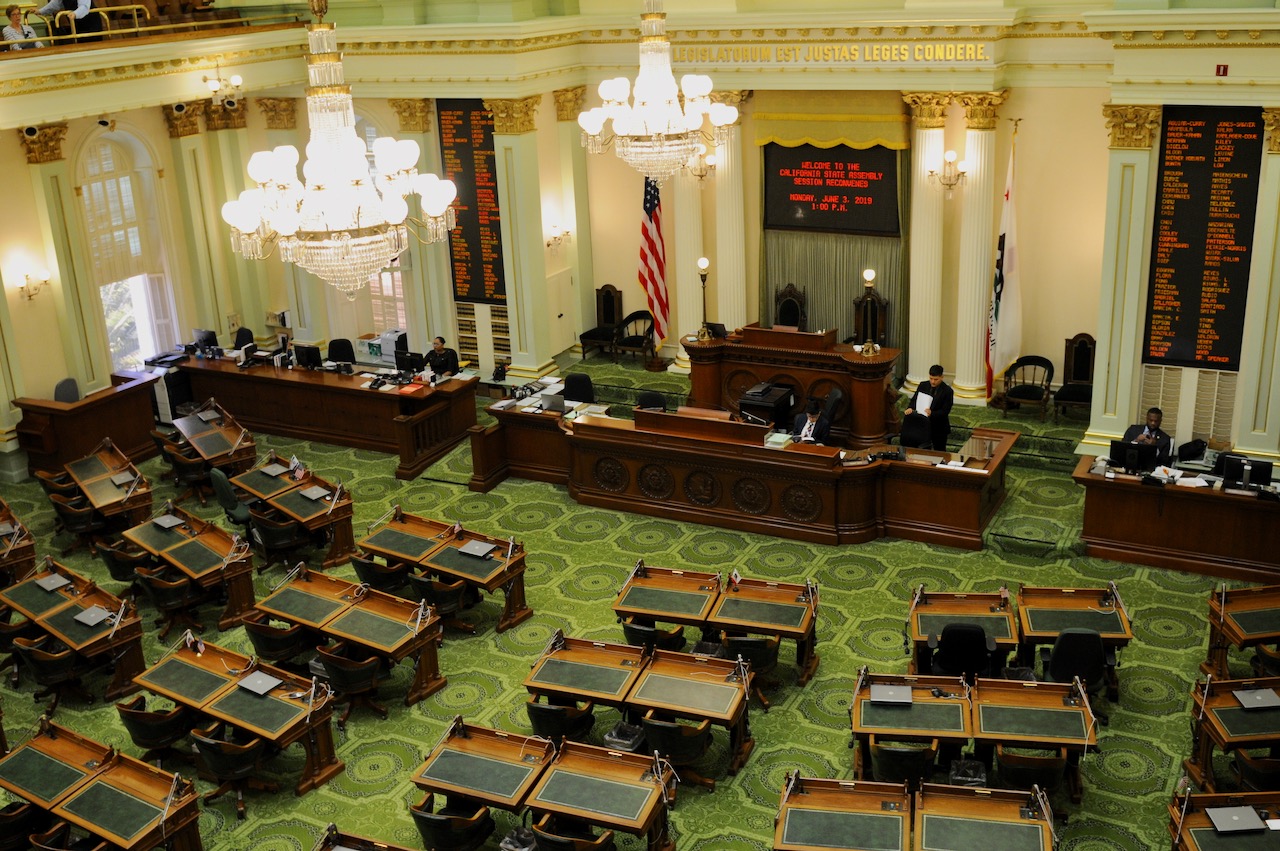
High School Students in School. (Photo: Monkey Business Images/Shutterstock)
Cradle to Cocoon: California Tracking Students for, Um, Well, Maybe,…
C2C hoovers up information from every corner of the state educational system
By Thomas Buckley, January 24, 2024 5:12 pm
Those in the hard studies – physics, engineering, chemistry, medicine , etc. – already have hard facts and run their work by what they say (or are supposed to.)
Soft studies folks – sociologists, education degree holders, communications types, gender studies mavens – have been jealous of this fact as it makes them appear to be in less “scientific,” less rigorous, less real fields of pursuit.
The fact they are does not terribly matter in the grand scheme of things, but it gnaws at them, not being able to definitely say that 2 + 2 = 4, not to have a social studies equivalent of idea A + policy B = wonderful outcome C.
In the hard sciences, data means certainty, again, if used properly; in the soft sciences, data is used to imply a certainty that really does not exist.
So those in the soft studies love hard facts, data points, metrics, graphs, and other demonstrable information, no matter how tangential to reality it may be. And that’s why every possible societal thing that can be measured shall be measured and collated and parsed and studied and interpreted upon pain of meaninglessness.
Welcome to the California Cradle to Career Data System.
“C2C” was launched in 2021 by Gov. Gavin Newsom for about $15 million (it seems to cost a few million a year to operate) and is touted as a way to help kids to move along through school to college and then on to a career.
Now, that’s not inherently a bad idea. The state operating a website that gathers college websites, scholarship opportunities, career advice and facts, definitions of majors, what makes more money, how best to apply, what to do to increase your chances of getting into the school you want, etc. would seem to make sense. And it could be operated by one person, maybe two, to make sure it is up to date and accurate – that would cost about $400,000 a year or so, tops.
But C2C does not stop there, does not stop at helping kids and families. It hoovers up information from every corner of the state educational system as part of the creation of a “longitudinal data system that provides tools to help students reach their goals and delivers information on education and workforce outcomes.”
C2C spokeswoman (the email listed pronouns as she/her) Angelique Z. Palomar stressed the program is not gathering new data, but removing the separate “silos” in which they have inhabited.
“California is building a State Longitudinal Education Data System, which aims to make education and workforce data that have already been collected and validated at the state level useful and actionable to students and families,” Palomar said.
While “students and families” can access the site and it does have some handy features like eTranscipt to move records to and fro, C2C is meant to go far beyond that and allow “Advocates and Researchers” to “Analyze data collected from multiple sources to shape policy and advance educational equity.”
Advocates – a key word because data can be made to dance to any tune one wishes.
Certain things like “X% of California kids go to college” are helpful topline numbers that can show a trend or identify a need or even sound about right and be left alone. But being, for example, able to say “only 11% of gender questioning Latinx high school sophomore in Pomona are thinking about college” is different because it immediately leads to the horror of inequality, inequality that must be addressed and solved with a government program involving tax dollars.
Already, C2C has a “Community Engagement Advisory Board (that) will create strong feedback loops with data users to support evidence-based decision making, analytical capacity, and equitable access to actionable information.”
In other words, this new mass of data will be able to be molded and shaped as needed by the educational establishment to convince the legislature and the public that it needs more money.
Sorry – it will inform community leaders’ policy decisions.
It will be pointed to over and over again to justify new programs and policies, new demands for equity, new demands that will most likely not move California’s schools from the bottom of the national pack.
And the data will allow those policy makers to claim that their plans and programs will be “data driven” and “evidence-based” instead of just “we think so” or “we have to do this to advance (fill in the woke buzzword here.)
C2C’s leadership is already an educational establishment wish come true. The board consists of legislature and gubernatorial appointments and “data providers,” which represent a number of other elements of the state’s educational establishment.
The board chairs (one is listed as chair elect, one as chair, but the terms overlap so, whatever) are a consultant that worked for former State Superintendent Jack O’Connell and the Bill and Melinda Gates Foundation, and a consultant that was the “former director of Equity, Access, and College and Career Readiness for the Long Beach Unified School District…”
One wonders what tune they will play to make the data dance.
To get a real feeling for the program, do check out the C2C roadmap here. If you are taking bureaucrat as a second language classes, this will be immensely helpful: https://c2c.ca.gov/roadmap-progress/
- Curiouser and Curiouser: Gascon’s Aide Charges Raise Troubling Issues - April 27, 2024
- Reedley ‘Lab’ Prompts Legislation - April 26, 2024
- USC Cancels Graduation - April 26, 2024





“In other words, this new mass of data will be able to be molded and shaped as needed by the educational establishment to convince the legislature and the public that it needs more money.”
There you go! Isn’t that always the way?
Thanks for the heads up on Chapter One Billion of this completely out-of-control nonsense.
No doubt most of this taxpayer funded boondoggle ended up disappearing to Democrat connected consultants and contractors? This is how the criminal Democrat mafia rolls?
I’d love to see this sort of thing applied to all sorts of data. I have to tromp through data on labor legislation, especially regarding independent contractors, and it’s chaos, literally, so any project aiming to overcome the chaos has my support. Besides, this sort of thing is already being done by for-profit entities like Goggle and AI apps. The state is just catching up to them because it’s not as well funded as they are.